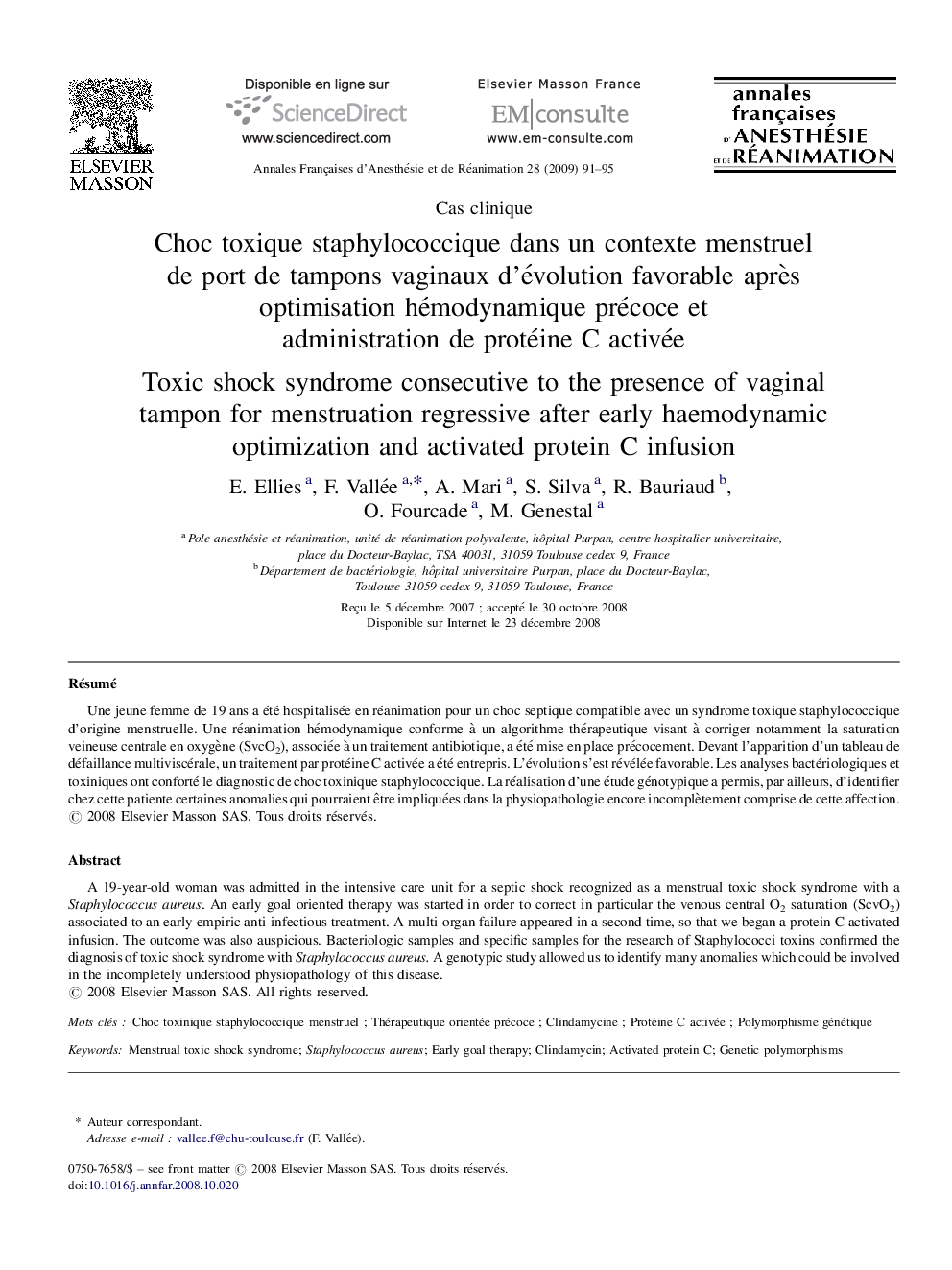| Article ID | Journal | Published Year | Pages | File Type |
|---|---|---|---|---|
| 2747456 | Annales Françaises d'Anesthésie et de Réanimation | 2009 | 5 Pages |
RésuméUne jeune femme de 19 ans a été hospitalisée en réanimation pour un choc septique compatible avec un syndrome toxique staphylococcique d’origine menstruelle. Une réanimation hémodynamique conforme à un algorithme thérapeutique visant à corriger notamment la saturation veineuse centrale en oxygène (SvcO2), associée à un traitement antibiotique, a été mise en place précocement. Devant l’apparition d’un tableau de défaillance multiviscérale, un traitement par protéine C activée a été entrepris. L’évolution s’est révélée favorable. Les analyses bactériologiques et toxiniques ont conforté le diagnostic de choc toxinique staphylococcique. La réalisation d’une étude génotypique a permis, par ailleurs, d’identifier chez cette patiente certaines anomalies qui pourraient être impliquées dans la physiopathologie encore incomplètement comprise de cette affection.
A 19-year-old woman was admitted in the intensive care unit for a septic shock recognized as a menstrual toxic shock syndrome with a Staphylococcus aureus. An early goal oriented therapy was started in order to correct in particular the venous central O2 saturation (ScvO2) associated to an early empiric anti-infectious treatment. A multi-organ failure appeared in a second time, so that we began a protein C activated infusion. The outcome was also auspicious. Bacteriologic samples and specific samples for the research of Staphylococci toxins confirmed the diagnosis of toxic shock syndrome with Staphylococcus aureus. A genotypic study allowed us to identify many anomalies which could be involved in the incompletely understood physiopathology of this disease.
